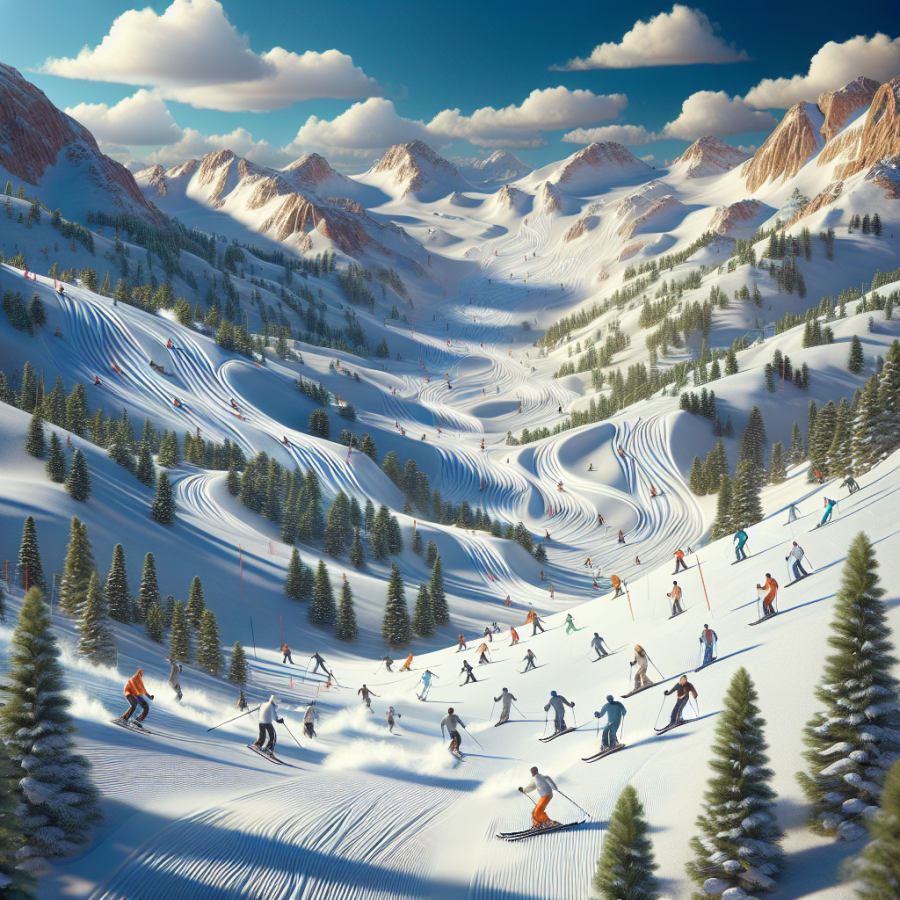From Beginner Slopes to Black Diamond Challenges: The Adventure of Alpine Skiing
Alpine skiing is a dynamic sport that captivates enthusiasts with its blend of speed, agility, and the breathtaking scenery of mountain slopes. As skiers progress from novices exploring the gentle contours of beginner terrain to seasoned veterans tackling the steep and treacherous black diamond runs, the adventure truly unfolds.
The journey begins on the beginner slopes, where the fundamental skills of skiing are taught and honed. Here, newcomers learn the basics of stance and balance, the cornerstone of all skiing techniques. These slopes are designed to be forgiving, with gentle gradients that allow for a safe and controlled learning pace. It's essential to master the snowplow or wedge technique at this level, which enables new skiers to maintain speed control and execute simple turns.
As novices graduate from the beginner slopes, they move on to intermediate runs, often marked by blue signs. The terrain becomes more challenging, with steeper gradients and varied conditions. Skiers refine their parallel turns, carve with more precision, and learn to navigate through varied snow conditions. It is at this stage that the importance of proper ski maintenance, including waxing and edge sharpening, becomes evident for smoother rides and better control.
The transition to advanced and expert terrain arrives with the embrace of black diamond challenges. The slopes here are steeper, the runs longer, and the conditions more complex. Skiers must have a well-developed skill set, including strong parallel skiing ability, a thorough understanding of dynamic turns, and the confidence to control speed in variable snow, including ice and moguls.
Mogul skiing is a significant draw for advanced skiers looking for an adrenaline rush. The bump-filled runs require a combination of technical skill, physical stamina, and mental tenacity. Skiers learn to absorb the impact of the moguls with their knees and hips while keeping their upper body stable and eyes focused on the path ahead.
For the most daring, there's off-piste and backcountry skiing, away from the groomed trails of a ski resort. This kind of skiing demands not only advanced technical skills but also knowledge of avalanche safety, navigation, and often, the usage of additional equipment such as skins for uphill travel in touring scenarios.
Expert skiers also face the exhilaration of the racing circuit, whether informal local competitions or more structured races. Racing pushes skiers to perfect their form, optimize their lines down the mountain, and fine-tune their equipment to shave off precious seconds.
Read also:
Reaching New Heights: The Thrill of Sport Climbing
Mastering the Mountains: The Exhilarating Journey of Alpine Skiing
As skiers carve down the glistening slopes of mountain ranges across the world, they are participating in a dynamic sport that is as rich in history as it is in the adrenaline it induces. Alpine skiing, a beloved winter pastime and competitive sport, requires a blend of agility, balance, and precision. The journey of mastering the mountains is both physically demanding and psychologically exhilarating, testing the limits of athletes as they navigate through the snowy terrain.
The selection and preparation of equipment is at the heart of any successful alpine skiing experience. Skis, poles, boots, and bindings must be tailored not just to the size and skill level of the individual, but also to the specific conditions they'll encounter on the slopes. Advances in technology have transformed the gear used in alpine skiing, making it safer, more comfortable, and more efficient, enhancing the overall experience.
Technique forms the foundation of proficiency in alpine skiing. Beginners often start on gentler slopes, learning the basics of the snow plough, or wedge, turn—a technique used to slow down or stop by pointing the ski tips together. As skiers progress to more challenging runs, parallel turns and carving become critical skills to master. These techniques involve keeping the skis parallel to each other while shifting weight smoothly from one ski to the other.
Physical fitness cannot be overstated in the realm of alpine skiing. Strength, endurance, and flexibility all play crucial roles in an athlete's ability to perform and improve. Core strength is essential for maintaining balance and control, while strong legs are necessary for the powerful movements required to navigate turns and absorb the impact of varied terrain. Regular cardiovascular exercise, combined with targeted strength training, underpins a skier's ability to endure long days on the slopes.
Mental preparation is just as important as physical readiness. The mind must be sharply focused and prepared to make instantaneous decisions as one encounters unexpected changes in the slope, snow conditions, or obstacles like trees and rocks. Visualization techniques, where skiers imagine themselves smoothly and successfully completing a run before they attempt it, can enhance performance and build confidence.
The allure of alpine skiing is magnified by the breathtaking environments in which it takes place. From the pristine peaks of the Alps to the rugged ranges of the Rocky Mountains, skiers are privy to some of the most awe-inspiring vistas on the planet.




